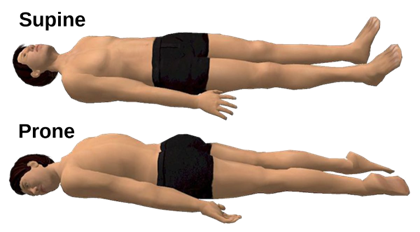A nurse is collecting data from a client who has an exacerbation of gout. Which of the following findings should the nurse expect? (Select all that apply.)
Tight skin
Edema
Tophi
Symmetrical joint pain
Erythema
Correct Answer : B,C,E
A nurse collecting data from a client who has an exacerbation of gout should expect to find edema, tophi, and erythema. Gout is a type of arthritis that occurs when urate crystals accumulate in the joints, causing inflammation and intense pain. Edema (swelling) is a common symptom of gout⁴. Tophi are deposits of urate crystals that can form under the skin in people with chronic gout³. Erythema (redness) is another common symptom of gout⁴.
a. Tight skin is not a common symptom of gout.
d. Symmetrical joint pain is not a common symptom of gout, as it usually affects only one joint at a time.

Nursing Test Bank
Naxlex Comprehensive Predictor Exams
Related Questions
Correct Answer is C
Explanation
The highest priority nursing intervention for a client who is unconscious following a stroke is to suction saliva from the client's mouth. This can help prevent aspiration and maintain a patent airway, which is essential for the client's survival.
Performing a passive range of motion on each extremity, recording the client's intake and output, and monitoring the client's electrolyte levels are also important nursing interventions for this client. However, these interventions are not as high of a priority as maintaining a patent airway.

Correct Answer is D
Explanation
Having the client lie prone several times each day is an appropriate nursing intervention for a client who is 2 days postoperative following an above-the-knee amputation. Lying prone can help prevent hip flexion contractures, which can occur after an above-the-knee amputation².
Elevating the foot of the bed is not an appropriate intervention for a client who is 2 days postoperative following an above-the-knee amputation.
Encouraging sitting up as much as possible is not an appropriate intervention for a client who is 2 days postoperative following an above-the-knee amputation.
Elevating the stump on a pillow is not an appropriate intervention for a client who is 2 days postoperative following an above-the-knee amputation.

Whether you are a student looking to ace your exams or a practicing nurse seeking to enhance your expertise , our nursing education contents will empower you with the confidence and competence to make a difference in the lives of patients and become a respected leader in the healthcare field.
Visit Naxlex, invest in your future and unlock endless possibilities with our unparalleled nursing education contents today
Report Wrong Answer on the Current Question
Do you disagree with the answer? If yes, what is your expected answer? Explain.
Kindly be descriptive with the issue you are facing.
